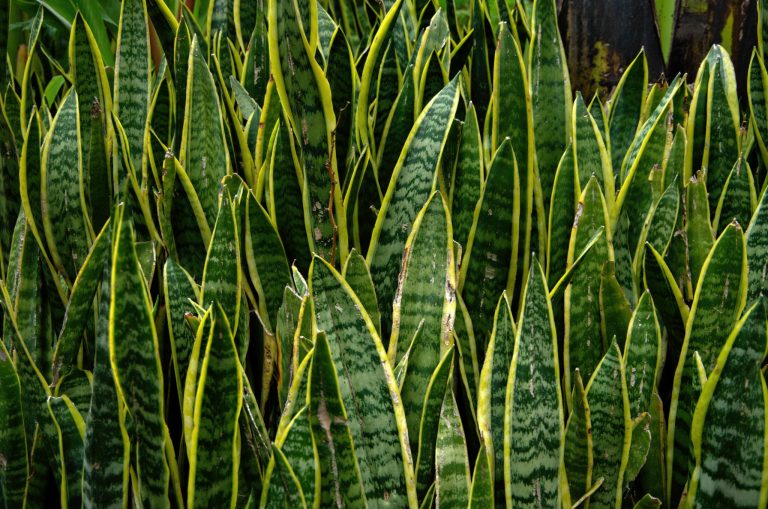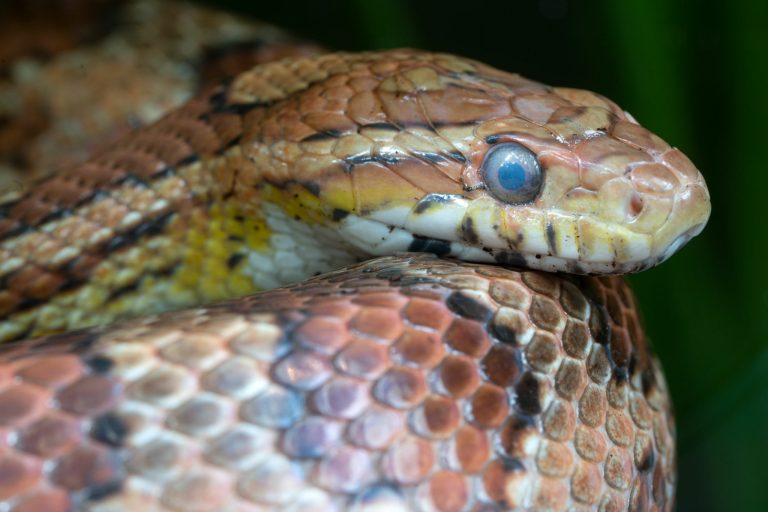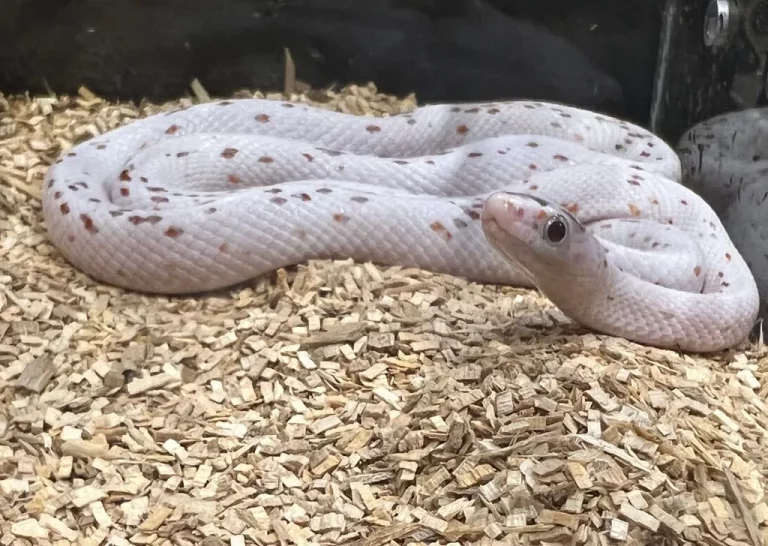Banana Pied Ball Python: Care Guide, Diet, and More
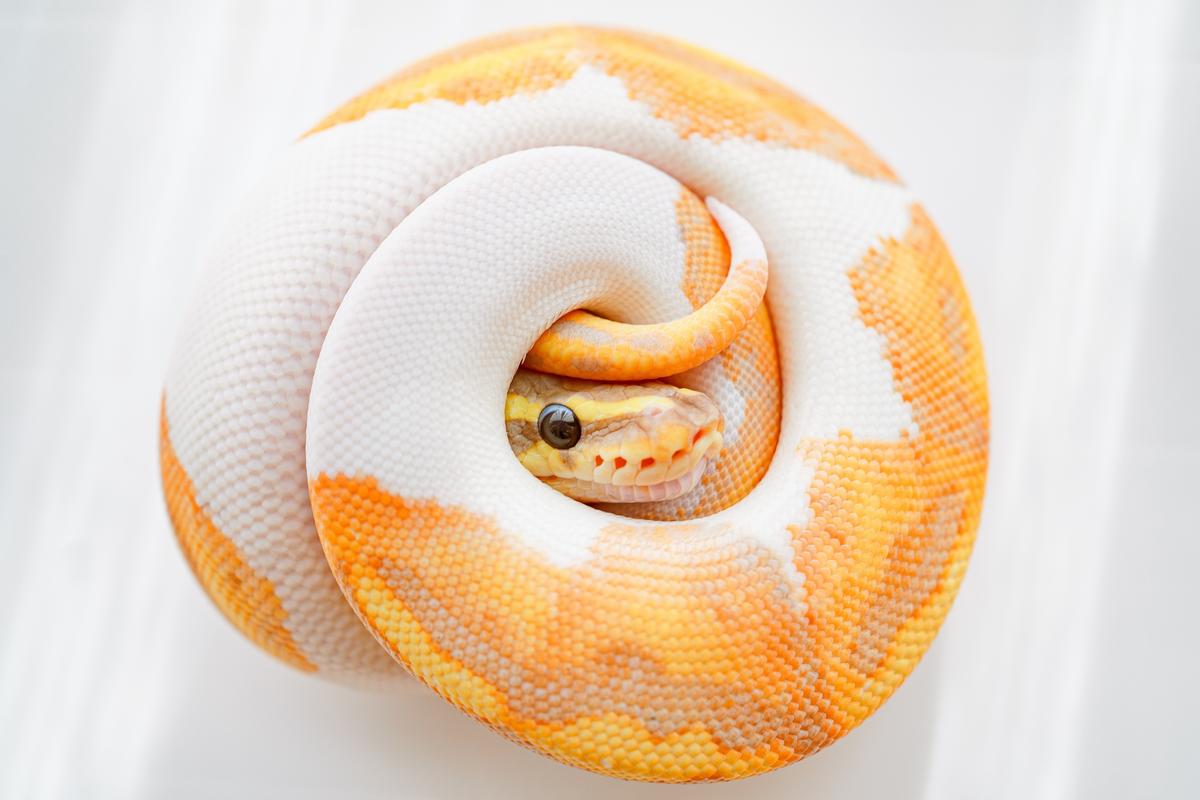
The Banana Pied Ball Python is a beautiful morph known for its creamy white and yellow markings. This care guide covers everything you need to know about keeping this popular pet snake happy and healthy.
Natural Habitat and Origin
Ball pythons are native to West and Central Africa, where they inhabit grasslands, forests, and scrublands. The Banana Pied morph was first produced in captivity in the early 2000s by selective breeding for the banana and pied color mutations.
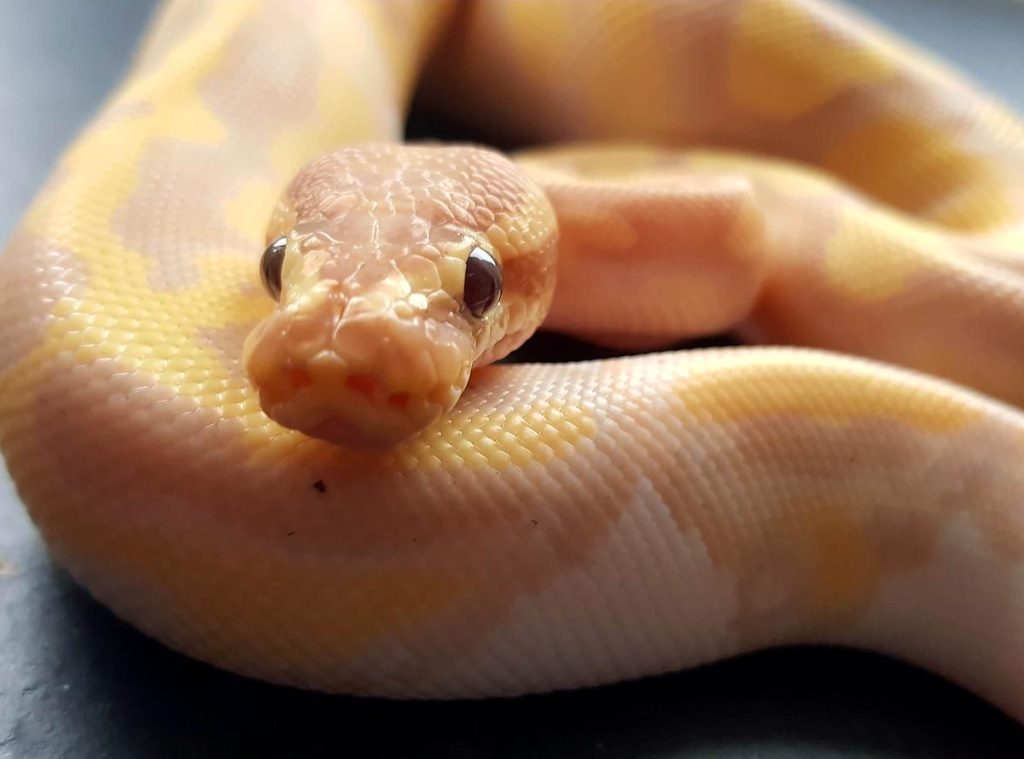
Quick Facts About Banana Pied Ball Python
| Fact | Value |
|---|---|
| Scientific name | Python regius |
| Lifespan | 20-30 years |
| Size | 3-6 feet long |
| Weight | 2-5 pounds |
| Diet | Rodents, birds, and other small animals |
| Habitat | Rainforests and savannas of Africa |
| Temperament | Generally docile, but can be defensive if threatened |
| Morph | Banana and pied |
| Coloration | Yellow, white, and black |
Enclosure Setup
Proper enclosure setup is key to keeping a ball python healthy. Here are the enclosure guidelines for a Banana Pied:
Enclosure Type
A juvenile Banana Pied can start in a 20-gallon tank. Adults need a minimum of a 40-gallon breeder tank. Ensure the enclosure is escape-proof with a secured lid.
Substrate
Good substrate options include reptile carpet, cypress mulch, or coconut husk. Avoid sand, as it can cause impaction if ingested. Spot clean waste and change substrate completely every 1-2 months.
Decor and Hides
Ball pythons are shy, so provide 2 snug hides, one on the warm side and one on the cool side. Include branches, fake plants, and other decor for enrichment.
Heating and Lighting
Maintain a basking spot of 88-92°F and an ambient temperature of 78-80°F. Use a low-wattage heating pad, ceramic heat emitter, or radiant heat panel regulated by a thermostat. No special lighting is required, though some exposure to UVB can be beneficial. Offer a 12-hour light cycle.

Diet and Feeding
Meeting the Ball Python’s nutritional needs is vital for health.
Diet
Feed pre-killed frozen/thawed rodents. Hatchlings can start with hopper mice. Adult Banana Pieds do well on small rats or adult mice. Banana Pied Ball Pythons should be fed 1-2 times per week.
Feeding Technique
Use long tongs to offer food head-first in the evening after lights out. Don’t handle your snake for at least 24 hours after eating.
Supplements
Dust food with calcium powder 1-2 times per month for developing snakes. Adults may only need occasional supplementation. Get more info about Reptiles.
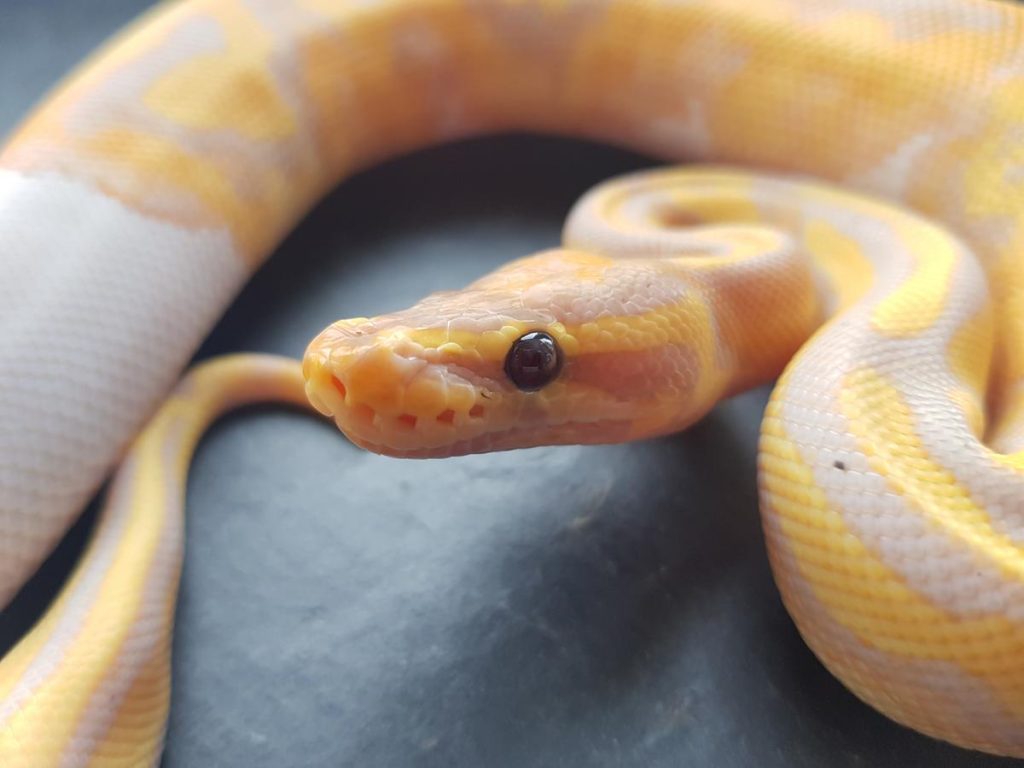
diet summary
| Fact | Value |
|---|---|
| Food | Rodents, birds, and other small animals |
| Feeding frequency | Once a week for adults, more often for juveniles |
| Food size | Prey should be slightly smaller than the widest part of the snake’s body |
| Supplements | Calcium and vitamin D3 supplements should be offered once a week |
Handling and Temperament
When handled regularly, Banana pies become docile, curious pets. Support the snake’s body when handling it and move slowly to avoid stress. Limit handling after feeding for proper digestion.
Related Post Read Also: Palmetto Corn Snake
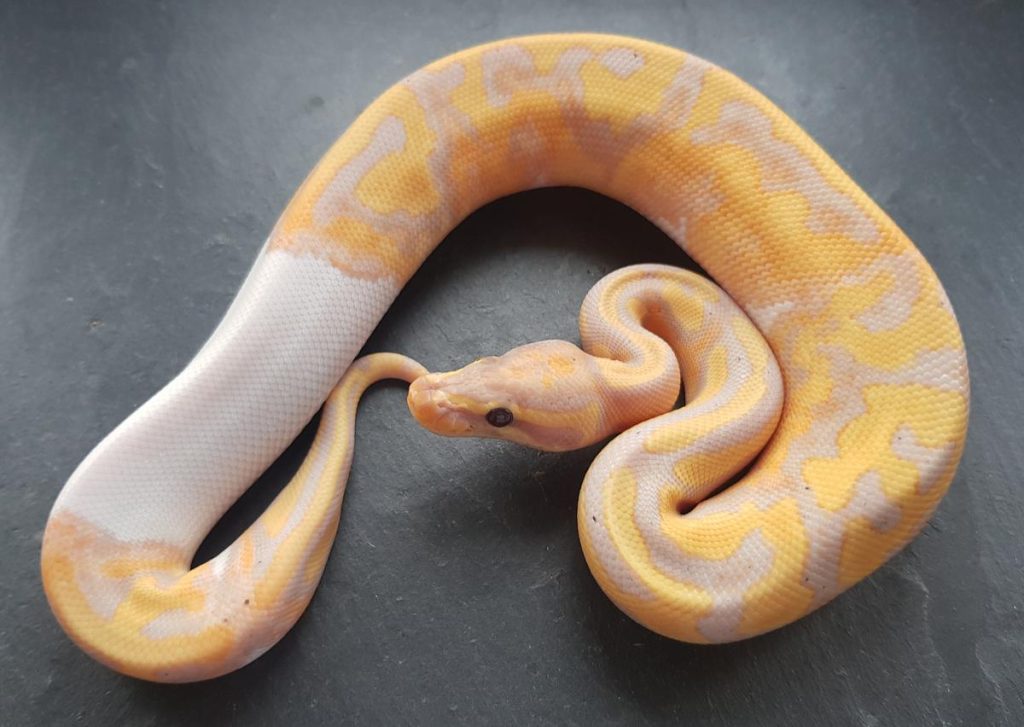
Common Health Issues
Banana Pied Ball Pythons are generally hardy, but watch for:
- Respiratory Infections: Caused by low humidity or temperatures. Symptoms include wheezing and bubbles around the mouth. See a vet promptly if noticed.
- Mites: Look for little black bugs on the snake’s skin. Treat with reptile-safe mite spray.
- Inclusion Body Disease (IBD): Incurable condition caused by a retrovirus. Symptoms include stargazing, and corkscrewing when moving. Animals with IBD should be quarantined.
Breeding
With proper care, Banana Pieds can live 15-30 years. Breeding requires slowing down feeding in winter and then gradually increasing temperatures in spring to induce breeding behavior. Hatchlings shed for the first time about 2-3 weeks after hatching.
Fun Facts About Banana Pied Ball Pythons
- Ball pythons are called “royal” pythons in some countries due to legends that African rulers wore them as jewelry.
- Their scientific name is Python regius.
- Ball pythons are known for their docile, calm nature once tamed.
- The pied mutation results in a patchy black-and-white appearance.
- The banana mutation produces a creamy yellow color.
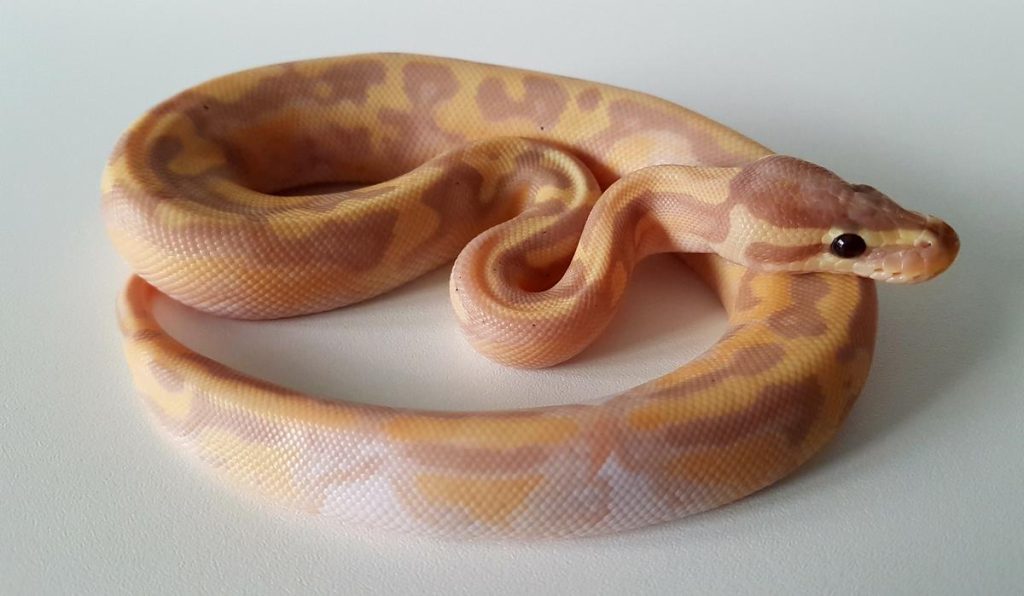
Buying A Banana Pied Ball Python For Sale
Due to their beautiful and unique coloration, banana pied ball pythons are highly sought after by reptile enthusiasts. When searching for a banana-pied ball python for sale, be sure to find a reputable breeder. Ask about the snake’s genetic history and parentage, and request proof of health and veterinary records. Expect to pay anywhere from $200-$500 for a normal quality banana pied ball python. Rare designer morphs with specialized breeding can cost over $1,000. Be prepared to provide the proper enclosure setup and care as described in this guide before purchasing your banana pied ball python. With the right environment and handling, a banana-pied ball python can make a wonderful lifelong pet.
Final Thought
With proper habitat setup, heating, humidity, feeding, and care, the Banana Pied Ball Python makes an engaging, long-lived pet. Its beautiful coloration and typically calm demeanor make it a popular choice for reptile enthusiasts. Be sure to purchase your snake from a reputable breeder and schedule check-ups to keep your snake healthy.
Frequently Asked Questions
How big do Banana Pied Ball Pythons get?
Banana Pieds reach an average adult size of 3-5 feet long. Some males stay smaller around 2-3 feet.
What temperature does a Banana Pied Ball Python need?
Aim for a basking spot of 88-92°F and an ambient temperature of 78-80°F. Use a thermostat and under-tank heater.
How often should I feed my Banana Pied?
Feed 1-2 times per week. Offer an appropriately sized rodent like a hopper mouse for juveniles or a small adult rat for adults.
Is the Banana Pied Ball Python poisonous?
No, ball pythons are non-venomous constrictor snakes that subdue prey by coiling around it.
How much does a Banana Pied Ball Python cost?
Expect to pay $200-$500 for a normal Banana Pied from a breeder. Rare designer morphs can cost over $1,000.

